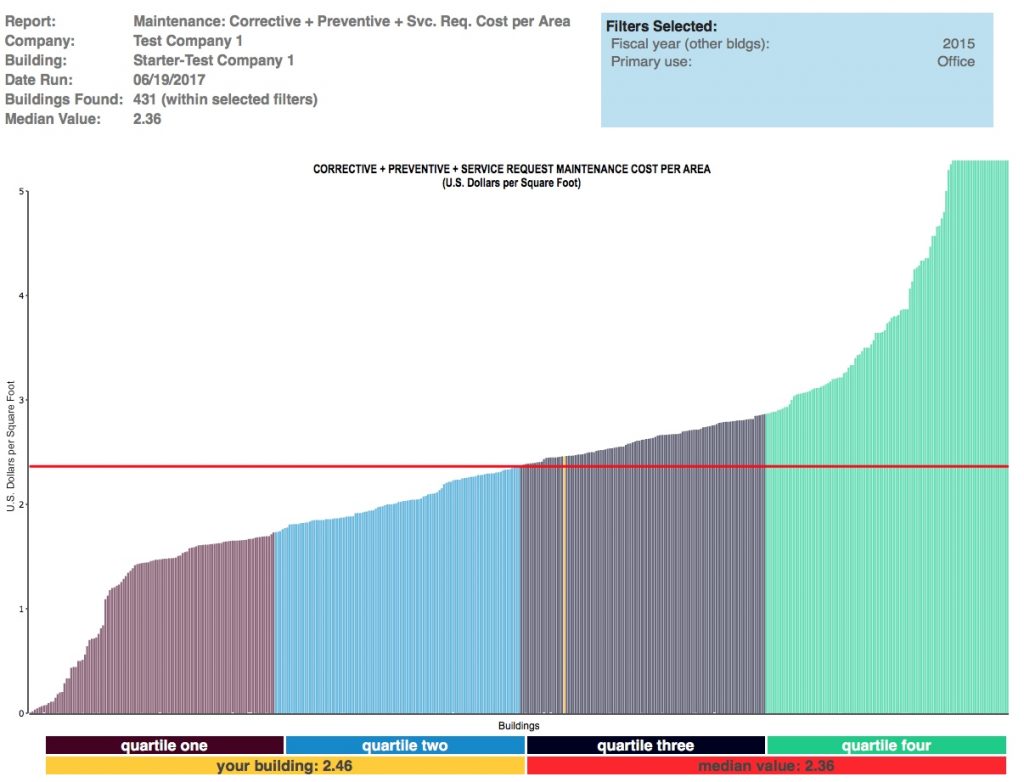June 2017 – FMs are almost always under pressure to find better ways to provide better cost-effective maintenance that is oriented towards preventive work rather than break-down unplanned activities (generally corrective maintenance is much more costly than preventive maintenance). Still, budgets are tight and often it seems the only activities that get attention are the breakdown issues. Too often it seems that maintenance budgets are often the first things to be cut and it’s very difficult to get the funds back when the economy improves.
Many FMs, including attendees at conferences, readily admit that their facilities are in poor condition and would like to do something to improve the user experience. There just should be a better way than sending out the maintenance crews and running around all day fixing the issues that get called in. Does this description seem like your maintenance group? Then let’s look at ways this can be changed.
Maintenance benchmarking can help you understand how your costs compare with others in your peer group and may be able to help you justify additional budget funds. Most FMs are familiar with benchmarking concepts. You enter your cost data, occupancy, and areas (square footage or meters). From this data, a good benchmarking system should be able to provide a normalized cost comparison for maintenance. This kind of benchmarking system shows where you stand compared to your peers.
Figure 1 below shows how well your office facility is performing its maintenance functions. There are 431 buildings in this peer group with a median maintenance cost per GSF of $2.36 and a first quartile performance of 1.73 per GSF. Our facility maintenance cost is above the median, in the third quartile, shown in yellow, with a cost of $2.46 per GSF.
A facility manager or maintenance manager looking at this chart would probably ask the question, “What can I do to get better, reduce costs, and minimize the number of unexpected/unplanned breakdowns. Based on the cost performance, compared with the peer group, it doesn’t look like there is a funding problem. A better approach would be to change the focus of the group. For that, we need to know which “best practices” could be implemented.

Figure 1 – Maintenance Cost per Area
Filters: Office Facilities
Provided courtesy of FM BENCHMARKING
A good benchmarking tool will provide you with the information to answer that question. Figure 2 identifies six of the 19 maintenance best practices identified by the FM BENCHMARKING application. Notice that the same filters were used as from the graph in Figure 1, ensuring that we have valid results.

Figure 2 – Maintenance Best Practices
Filters: Office Facilities
Provided courtesy of FM BENCHMARKING
Although we are showing just six of the best practices, they should give an idea of how the study of best practices can provide a good sense of how the application can be used to “tune up” the maintenance performance. Best practices are a way to compare what your peers (others in your quartile) are doing differently than you and what those who are spending less (the next better-performing quartile) are doing.
From observation, we already think the group spends too much time running around from job to job. When they do show up for the trouble call, they often don’t have the right parts or tools to fix the problem resulting is some additional time running around.
Now consider MB03 in Figure 2 above, “Electronic handheld devices have been implemented…” We have not implemented this best practice at our facility and second quartile participants have implemented this best practice in 82% of their facilities. Handheld devices could go help make sure the crew has the proper parts and tools when they are sent to a job.
Carefully evaluate MB06 in Figure 2 above, “Maintenance management system (CMMS) has been implemented…”. Without a CMMS it is impossible to track work completed or in progress. Knowledge of repeated breakdowns is left to the crew and the same crew may not be aware of the previous activity.
These are just a few examples but the technique can be applied to all maintenance best practices. Clearly, using the best practices tables is a good way to improve the overall quality of the service delivery. Using the best practices module, we could carefully analyze which best practices would have the highest benefit to improving maintenance services. By applying these, you are sure to improve your performance.